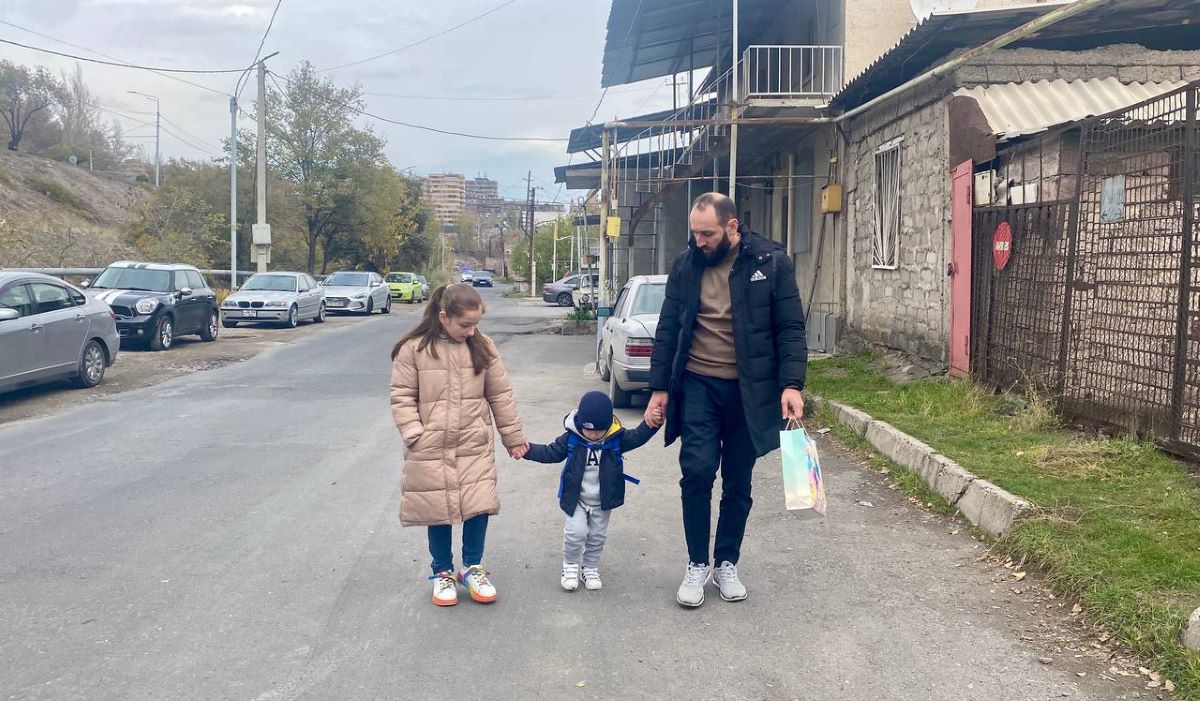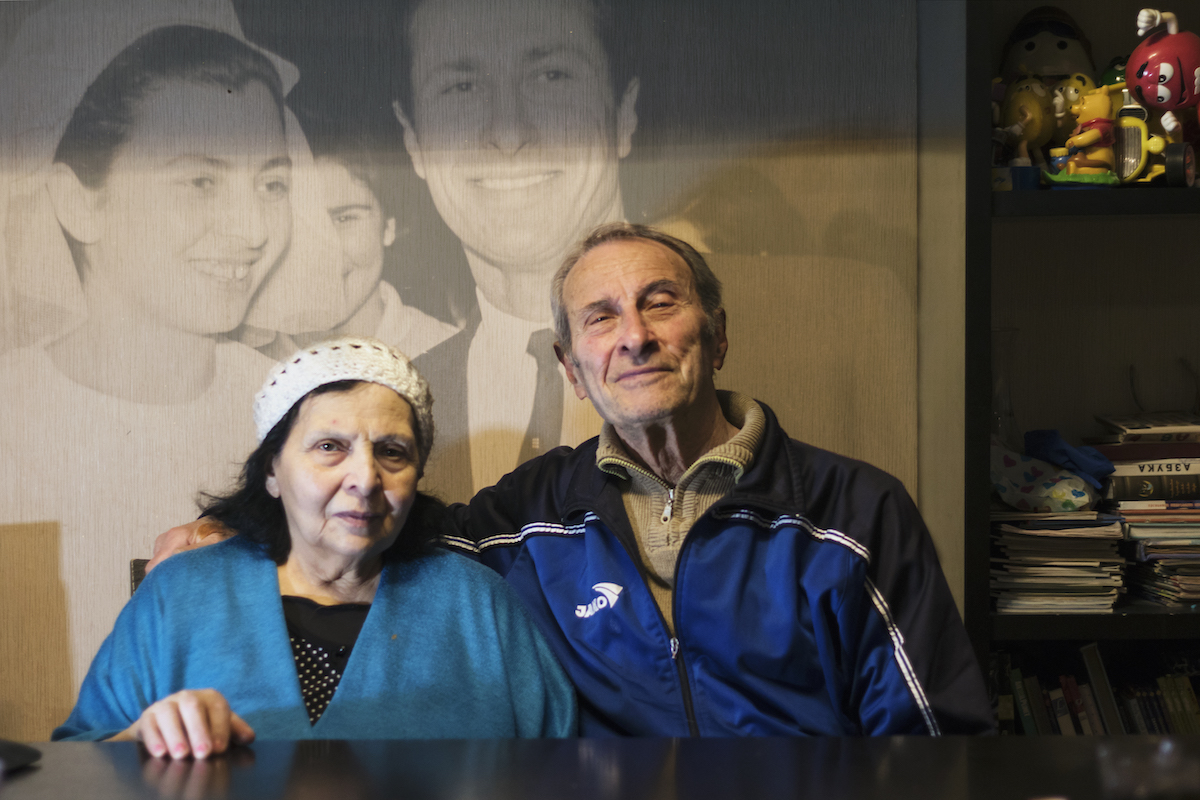Divorce rates rise in Armenia as traditions fail to keep marriages together
Divorce in Armenia
The number of divorces in Armenia has risen, coinciding with a decline in the number of marriages. According to the Statistical Committee, the divorce rate has increased by 10% over the past decade.
What has changed in society, and why? When is it possible to save a marriage, and in what circumstances? The article goes on to share the stories of women who decided to divorce, along with expert analysis of the situation.
- 10 thousand families with children received housing assistance in Armenia
- Construction boom in Yerevan, prohibitively high housing prices will remain for the time being
- Debed – Armenia’s first SMART village
“Events of that day were the last straw”
Four years ago, Sona Stepanyan made one of the most significant decisions of her life: she would live peacefully with her three children, without conflicts, and would no longer stay in hell with her husband.
“The decision to divorce had been building up inside me for years, but I made it in a single day. One day, I went out to meet a friend. My husband called me via video. He saw I was truly with a friend, but he sent me a message saying not to come back. Of course, I returned home. He started shouting, cursing, throwing chairs around, and insulting me in front of strangers. It was a terrible humiliation. That day’s events were the last straw,” Sona recalls.
Looking back on her 11 years with her husband, she admits there were many problems— a large family, an unemployed husband, and painful jealousy. But in the early years, she didn’t consider divorce:
“Now I understand that all of this ultimately led to my decision to divorce. In the beginning, I was his support and strength. Even when he went abroad for work and had problems there, I managed everything alone. I gave birth to our third child while he was away and moved into a rental apartment. Besides the increased expenses, I also paid off the debts he left behind. I did everything without complaining about life. When he returned, I expected positive changes. But he got worse, and perhaps I became less tolerant.”
Sona left her husband with the children in 2020 and filed for divorce in 2021.
“The most ridiculous part is our judicial system. The process lasted from February 2021 to July 2024. The court’s decision only came into effect in August. For four years, he didn’t help with the children at all. While we live in a rental apartment, all three of them are minors. Over the past three years, he was supposed to pay us 4 million drams [over $10,000] in child support. I never worried about money; I’ve always earned my own as a programmer. Now, I live without conflicts and support one less person.”
Statistics from recent years
In 2012, divorces accounted for 17% of all marriages, but by 2022 and 2023, this figure had risen to nearly 27%.
Analysis of data from 2011 to 2021 shows that most divorces occur after 20 or more years of marriage. However, there are also cases where couples separate after just one year together. In 2021, such cases constituted 5% of all divorces.
Over the past 15 years, the highest number of marriages in Armenia was recorded in 2011, with 19,710 marriages registered. This figure then declined sharply. While there was a slight increase in marriages in 2019, the numbers fell sharply again starting in 2020. It is believed that this decline was influenced by restrictions related to the coronavirus pandemic and the war.
Following 2011, a significant number of marriages were also registered in 2021, totaling 17,165. However, this figure began to decline again the following year.
The ratio of marriages to divorces was 15% in 2009. Over the past 15 years, this ratio has doubled, reaching nearly 30%.
The role of traditions
Marianne Apresyan left her husband after less than a year of marriage. This decision came during her fifth month of pregnancy, and later, after experiencing health issues, she lost the baby. She now reflects that she rushed into marriage and should have taken the time to better understand the person before committing.
“I was in love and thought I was happy. But a few months later, everything turned upside down. It wasn’t that I couldn’t handle the difficulties; I realized I needed to correct my mistake urgently. Of course, making such a decision is not easy. After that, you go through serious psychological challenges, compounded by societal stereotypes that will take many years to overcome,” Marianne says.
Despite traditional views on family remaining strong in certain segments of society, the overall situation is changing, according to Gayane Gusikyan, a clinical psychologist at the “Aig” center. “This is especially evident among the youth. There has been a reassessment of traditional beliefs. An important factor has emerged: the social and economic independence of women. Divorce is becoming a more acceptable solution, a natural process in people’s lives, particularly when couples seek to preserve their mental health and well-being.”
Marianne shares that she felt the most pressure from her own mother, who was ashamed that her daughter was getting divorced. However, Marianne believes she lives for herself, not for society, and has the right to make her own choices.
Sona Stepanyan recalls being pressured by her mother-in-law, who tried to convince her to save her marriage. “She said, ‘No matter what, you’ll end up on a bad path,’ implying that I would become a prostitute. I replied, ‘Sorry, but you’re insulting me right now.’ There was also pressure from acquaintances—think about yourself and your children. Even my relatives insisted that we find a way to get along and live together,” Sona remembers.
Along with the rising number of divorces, such traditional views remain in society. Many couples continue to live together under the pressure of public opinion.
“Stereotypes about the importance of family, the fate of children, and concerns about what people will say become decisive factors in small communities, where discussions about a specific family can linger for a long time. Many are hesitant to divorce because of this,” the psychologist explains.
“We need to overcome problems, not divorce”
Both marriage and divorce are significant steps, and young people must make informed decisions, being prepared for shared life, emphasizes Tatevik Badalyan, head of the “Population and Development” program at the UN Population Fund (UNFPA).
“People are marrying later, and the number of divorces is rising; individuals of reproductive age are getting divorced. As a result, birth rates are declining, leading to demographic risks in society,” Badalyan says.
She believes that young couples often require psychological support. “In the case of divorce, courts give couples three months to think things over. However, during these three months, we provide no assistance. People remain alone with their problems. Family is the foundation of the state. This understanding should be instilled in individuals from a young age. We need to offer psychological support to those who need it. Nevertheless, when couples face challenges, they should work to overcome them rather than rushing into divorce without reflection.“
“Caught between the tectonic shifts of the past, present, and future”
Mger Manukyan, responsible for public relations at the UN Population Fund, believes that while traditions remain alive, they are gradually being displaced in real life. “We are restructuring. Something new has arrived. But it’s still unclear what is happening and where we will ultimately end up. Looking to the West, 80 percent of the adult population in the U.S. do not want to live with a partner or spouse; they prefer to live alone. This is something that cannot be resisted.“
He is convinced that many lack basic skills, such as ordinary conversation and mutual understanding, to overcome family problems. “This is a significant issue. If you have a problem and you don’t talk about it, it grows over the years. Then it suddenly explodes, resolving everything at once. We are moving more toward violence and divorce. It would be beneficial to learn the formula for a happy family, a family without violence. When you delve deeper, you realize that happy couples simply know how to communicate with each other.”
According to Manukyan, “young families find themselves caught between the tectonic shifts of the past, present, and future.”
He explains that the model of the traditional Armenian family, where everyone lived under one roof and decisions were made by the elders, has been inherited from the past. “Meanwhile, much has changed. Reality has become different, but many are trying to maintain the old model in the present. That’s where the problems begin. Today, young people categorically do not want to live with their elders, as the older generation is still living in the past. Those with life experience should be wise enough to understand that the time has come to let the young go and to support them only when they truly need it.“
Divorce is a stress and emotional trial for everyone. Psychologist Gayane Gusikyan notes that women often find themselves more vulnerable during divorce, frequently becoming the primary caregivers for children and worrying about how to ensure their well-being. For men, it is also a source of stress, especially when they struggle to maintain communication with their children. Often, they hide their emotional pain, which can lead to severe mental health issues and adversely affect their well-being.
Sona Stepanyan recalls the shock her husband experienced when she informed him of her decision to divorce: “He never thought I would take such a step. It was very unexpected for him. He was like a wounded animal because he didn’t anticipate my decision. Perhaps he also needed time to recover from that stress. In our family, it was always a problem to talk to each other and accept each other’s opinions. I always accepted him as he was and avoided conflicts. But we needed to communicate and discuss everything.”























